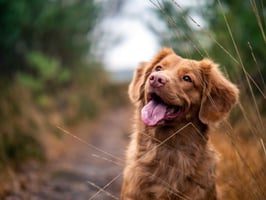Dogs bark for a variety of reasons, but excessive barking can become a nuisance. Fortunately, there...
Dog Training for Dummies: A Comprehensive Guide
Training your dog can be a daunting task, especially for those new to the process. But with the right guidance, you can easily teach your pup the basics of good behaviour. This comprehensive guide to dog training for dummies will provide you with all the tips and tricks you need to get started. We will cover everything from potty training to commands, so that you can have a well-behaved pup in no time.
Establishing a Routine
The cornerstone of any successful dog training regimen is establishing a routine. As much as possible, you should set up a consistent schedule for feeding, exercising, and playing with your pup. This will help your pet understand when it’s time to eat, play, and rest. Additionally, it will make it easier for you to know when to start teaching your pup commands and tricks.
When you’re setting up your routine, be sure to factor in plenty of time for potty breaks. This is especially important for puppies, who need to go outside every few hours. If you can, try to take your pup outside on a regular schedule, such as after meals or when you first wake up. This will help your pup learn to hold its bladder for longer periods of time.
Teaching Commands
Once you’ve established a routine, you can start teaching your pup commands. Start with the basics, such as “sit”, “stay”, and “come”. After your pup has mastered these commands, you can move on to more advanced ones, such as “heel” and “down”. When training your pup, be sure to use positive reinforcement. Reward your pup with treats or verbal praise when it follows your commands.
It’s also important to be consistent with your commands. Your pup will learn faster if it understands that the same command always means the same thing. And when your pup does something wrong, don’t yell or punish it. Instead, simply remind your pup of the correct command and reward it when it follows your instructions.
Socialising Your Dog
In addition to teaching commands, you should also take the time to socialise your pup. This means introducing your dog to new people and animals in a controlled and safe environment. This will help your pup learn how to interact with other animals and people, and it will also help it become more confident in unfamiliar situations.
When socialising your pup, be sure to take it slowly. Start by introducing your pup to one or two people at a time, and give it plenty of time to get used to them. Once your pup is comfortable with these people, you can gradually introduce it to larger groups. Additionally, be sure to give your pup plenty of positive reinforcement when it behaves properly. This will help it learn to interact with others in a friendly and appropriate manner.
Troubleshooting Common Problems
Even with the right guidance, you may still encounter some common problems when training your pup. Here are a few of the most common issues and how to solve them:
- Potty Training: If your pup is having trouble with potty training, try setting up a consistent schedule for potty breaks and rewarding your pup when it goes outside. Additionally, be sure to clean up any accidents with an enzymatic cleaner, as this will help discourage your pup from using the same spot again.
- Chewing: Chewing is a normal behavior for dogs, but it can be a nuisance if it’s not managed properly. If your pup is chewing on inappropriate items, redirect it to a chew toy and give it plenty of praise when it chews on the toy instead. Additionally, be sure to keep all items that you don’t want your pup to chew out of reach.
- Jumping: If your pup is jumping on people, it may be trying to get attention. The best way to discourage this behavior is to ignore your pup when it jumps and reward it when it behaves properly. Additionally, you can teach your pup the “off” command, which will help it learn to stay off furniture and people.
Conclusion
Training your pup can be a daunting task, but with the right guidance, you can easily teach your pup the basics of good behaviour. Establishing a routine, teaching commands, and socialising your pup are all essential components of a successful dog training regimen. Additionally, it’s important to troubleshoot any common problems that may arise. With the tips and tricks outlined in this guide, you can have a well-behaved pup in no time.



